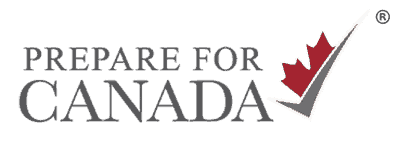
For newcomers, it’s important to choose the right type of resume format because this can play a key factor in getting hired in Canada. And a well-written resume is vital to grab the attention of Canadian employers. A good resume highlights all of your best skills and accomplishments in a way that is relevant to potential employers. This is why there are different types of resume formats for jobs, each useful in its own way.
Writing a Canadian-style resume is important. And it’s vital to invest the time. Otherwise, you can send out hundreds of resumes that go unnoticed and this will only be frustrating and lengthen your job search. Also, it’s helpful to know that there are many free settlement services that can help you to write a Canadian-style resume.
Advertisement:
When you know what elements are important, you can convey this information and increase your chance of employers contacting you for an interview. Here, I’ll discuss the three main types of resume formats and when to use each one.
Three Main Types of Resume Formats
Advertisement:
These three types of resume formats each look different and highlight aspects of your education, skills, and experience. Let’s take a deeper look at each of these resume formats.
- Chronological resume
2. Functional resume
3. Hybrid resume (also known as combination)
1. Chronological Resume
A chronological resume format lists all your experience and previous jobs in reverse chronological order. This means that you will list your jobs in order from when you did them. Your most recent job will be at the top of your resume, followed by your second most recent job, and so on.
A chronological resume is the most common and practical resume format. Employers usually prefer this type of resume format because it:
Advertisement:
- shows your growth and previous work experience
- is easy to read as it follows a linear design.
You should use a chronological resume wherever you can. It is the most preferred by employers and recruiters and is the most likely to get you invited for the interview. This is because employers usually value experience over qualifications. Experience indicates that you have all the skills necessary to complete the job. However, there are situations in which a chronologically formatted resume may not be the best option for you.
Chronological resumes are very straightforward. They list your work experience in order starting with your most recent employment along with the dates. Canadian employers prefer this type of resume because it allows them to quickly assess your employment history. It shows when and for how long you were unemployed as well as what type of work experience you have.
Show Your Employment Chronologically
PROFESSIONAL EXPERIENCE
Electrical Engineer 2015 – 2021
Company Name, City, Province, or Country (if not Canada)
- Conducted research into the feasibility, design, operation and performance of electrical generation and distribution networks
- Designed electrical and electronic circuits, components, systems, and equipment
- Supervised and inspected the installation, modification, testing, and operation of electrical and electronic systems and equipment
Computer Programmer 2011 – 2015
Company Name, City, Province, or Country (if not Canada)
- Created, tested, debugged, documented, and implemented client-tracking software for Company Name utilizing skills in C# and VB.net
- Worked directly with end-users to maximize efficiencies and user-friendliness
- Employed strong communication skills to “Train the Trainers”
Customer Service Representative 2008 – 2011
Company Name, City, Province, or Country (if not Canada)
- Answered inquiries from customers in person and on the phone
- Investigated and solved any customer concerns
- Accurately processed financial transactions using computerized cash registers in a fast-paced environment.
When to Avoid the Chronological Type of Resume
You should avoid using this type of resume format for jobs if you:
- have gaps in your work history
- have insufficient work history
- are transitioning into a new career with limited relevant experience.
You may want to consider writing a functional resume if the chronological resume format isn’t suitable for your needs.

Related Posts:
Crafting Your Job Search Action Plan to Work in Canada
Canadian Style Resume | Is it Necessary?
Example of an Elevator Pitch for Your Resume
Medical Laboratory Technologists Job Requirements in Canada
Biotechnology Employment & Job Requirements in Canada
Dental Hygienist Jobs in Canada | What Newcomers Need to Know
Social Work Job Requirements in Canada
Working in Canada | A Guide to Land Your Dream Job!
2. Functional Resume
The functional resume for jobs highlights your skills rather than work experience. This is the opposite of a chronological resume because the focus is not on your previous jobs. With a functional resume format, you will be able to highlight your most relevant skills and abilities. You will also be able to list your most relevant job experience. This will shade any employment gaps while still showing all your skills that are related to the role.
Functional resume formats for jobs are not the best way to present yourself to a potential employer. In fact, recruiters do not like functional resumes. Not only do they take time to make, but they are also hard to go through on the recruiter’s side.
This type of resume format is ideal for people that have gaps in their employment history. A chronological resume format will give away any of those gaps but a functional resume will hide them. Instead, a functional resume will present all your skills and accomplishments.
A functional resume format is good for:
- students, or
- people with new careers.
The main idea is that if you do not have an employment history relevant to the job you are applying for, functional resumes become useful. Just remember that employers usually value experience more than qualifications. This is why it is best to include at least some relevant experience in your resume.
If you feel like you have a successful work history and you also want to showcase your skills and accomplishments, you can use a hybrid resume.
Highlight Your Skills with a Functional Resume Format
SKILLS AND EXPERIENCE
Manufacturing
- Set up and qualified new equipment for wafer etching and packaging
- Utilized statistical process control (SPC) in ISO 9001 2008 manufacturing environment
- Analyzed failure mechanism (FMEA) to improve MTBF and yield improvement
- Identified and troubleshot process, equipment, and operation-related issues
Management
- Managed a construction project team of 2 engineers and 5 draftspersons
- Supervised drafting of structural drawings, construction specifications and project schedules
- Verified shop drawings, structural calculations and produced concrete precast element types
- Reported project progress to customers according to their requirements
Estimating
- Estimated quantities and costs of pre-cast concrete structures
- Prepared contract documents and payment claims as well as negotiated with customers regarding cost variation
EMPLOYMENT HISTORY
Project Chief 2005 – 2016
Company Name, City, Province, or Country (if not Canada)
Structural Engineer 2002 – 2005
Company Name, City, Province, or Country (if not Canada)
3. The Hybrid Type of Resume Format
The third type of resume format for jobs is the hybrid resume, also known as a combination resume. It is a blend of chronological and functional resume formats. This resume format starts off by listing skills, qualifications, and achievements first. Then you move on to your employment history and work experience in reverse-chronological order.
A hybrid resume format for your resume will give you the chance to get the best of both worlds when done right. There are many situations in which a hybrid resume will be the best option for you.
If you are highly qualified in your profession and also have a successful work history, you will want to use the hybrid resume format. This type of resume format will allow you to showcase all of your qualifications as well as your work history. Your skills and qualifications will give the resume an eye-catching element while your employment timeline will show the employer you have the experience necessary for the job. A hybrid resume format is best for people that have both a good employment history and qualifications in their profession.
One of the best things about a hybrid resume format is that they are extremely flexible. You can include things such as education, training, relevant online courses, experience, previous jobs, and any accomplishments. With a hybrid resume, you can exclude any irrelevant facts about yourself and only include the things that matter to your employer and increase your chances of getting hired.
Key Takeaways
So to conclude, here is a brief summary of what type of resume format you should choose:
- Chronological resume format: If you have a successful work history and adequate qualifications, you should choose a chronological resume format.
2. Functional resume format: If you do not have an employment history relevant to the role you are applying for, consider a functional resume format. This will allow you to showcase your qualifications, skills, and achievements.
3. Hybrid resume format: If you have a successful work history, and you also want to highlight your skills and accomplishments, a hybrid resume might be the best option for you.
Once you have chosen a resume format that works for you, you might be looking to build a Canadian-style resume that makes you stand out. Here is a helpful article that will give you 8 tips on how to write a Canadian-style resume.
A great addition to a resume is a cover letter. If you are serious about getting the job, a resume will not be enough. A cover letter is a great way to explain any employment gaps and explain why you are the perfect candidate for the job. Here is an article that will help you write an effective cover letter.
Choosing the right resume format could mean the difference between landing the job and getting rejected. It’s all about how you present yourself in front of your potential employers. Whether it be the skills you want to showcase or your employment history, choosing the right resume format will help you present yourself the way you want.
For information, tools, free webinars, and more visit our Finding a Job in Canada resource page. Get the help you need to achieve your career goals in Canada!

My name is Zain Usmani and I am a freelance content writer who currently resides in Mississauga, Ontario. I immigrated from Pakistan to Canada 5 years ago and have lived in many cities ever since. I have lived in Calgary AB, Edmonton AB, Regina SK, London ON, and Mississauga ON, while visiting over 40 Canadian cities and towns. I have a great passion for writing and I love helping people through it.

